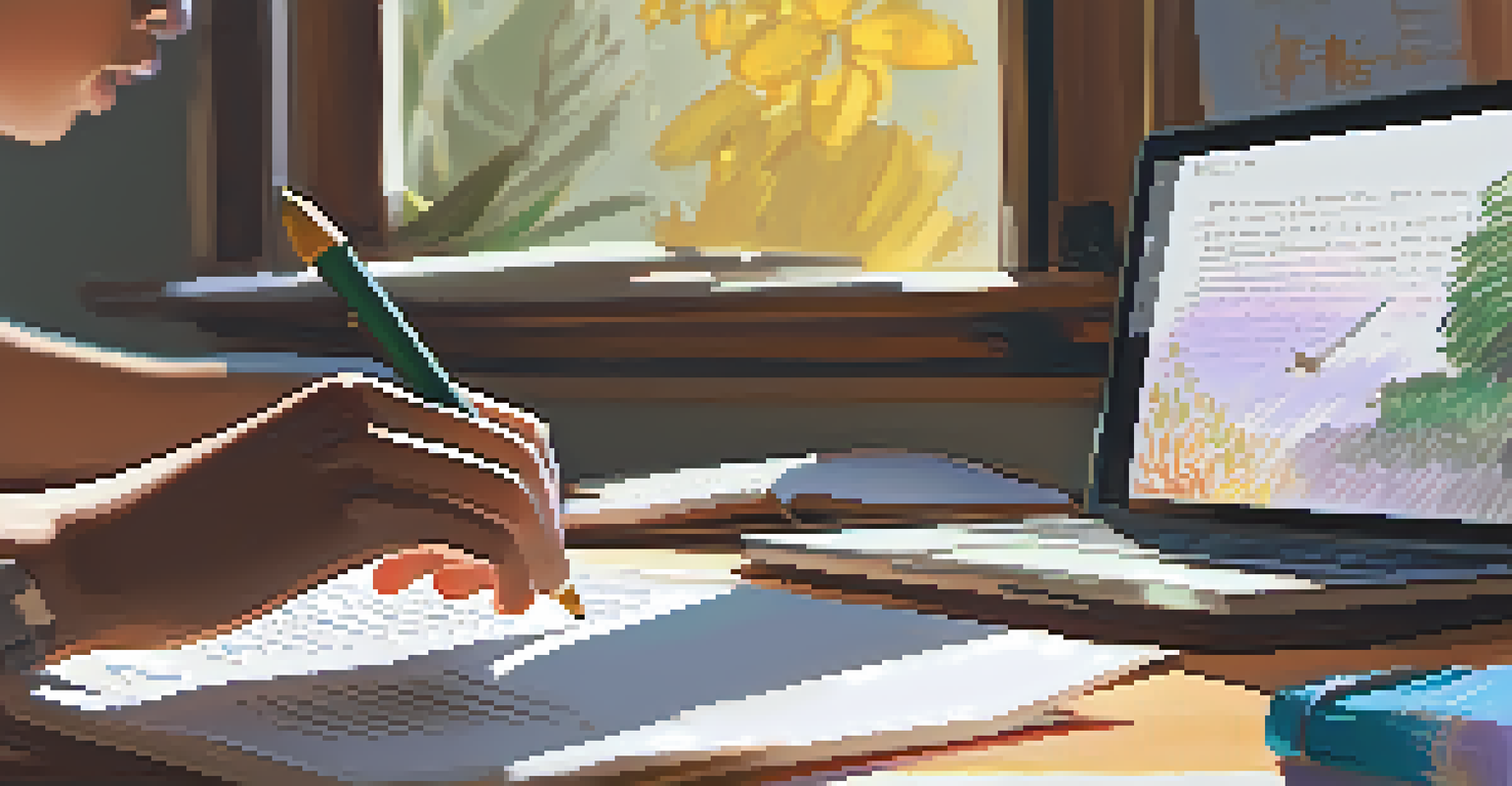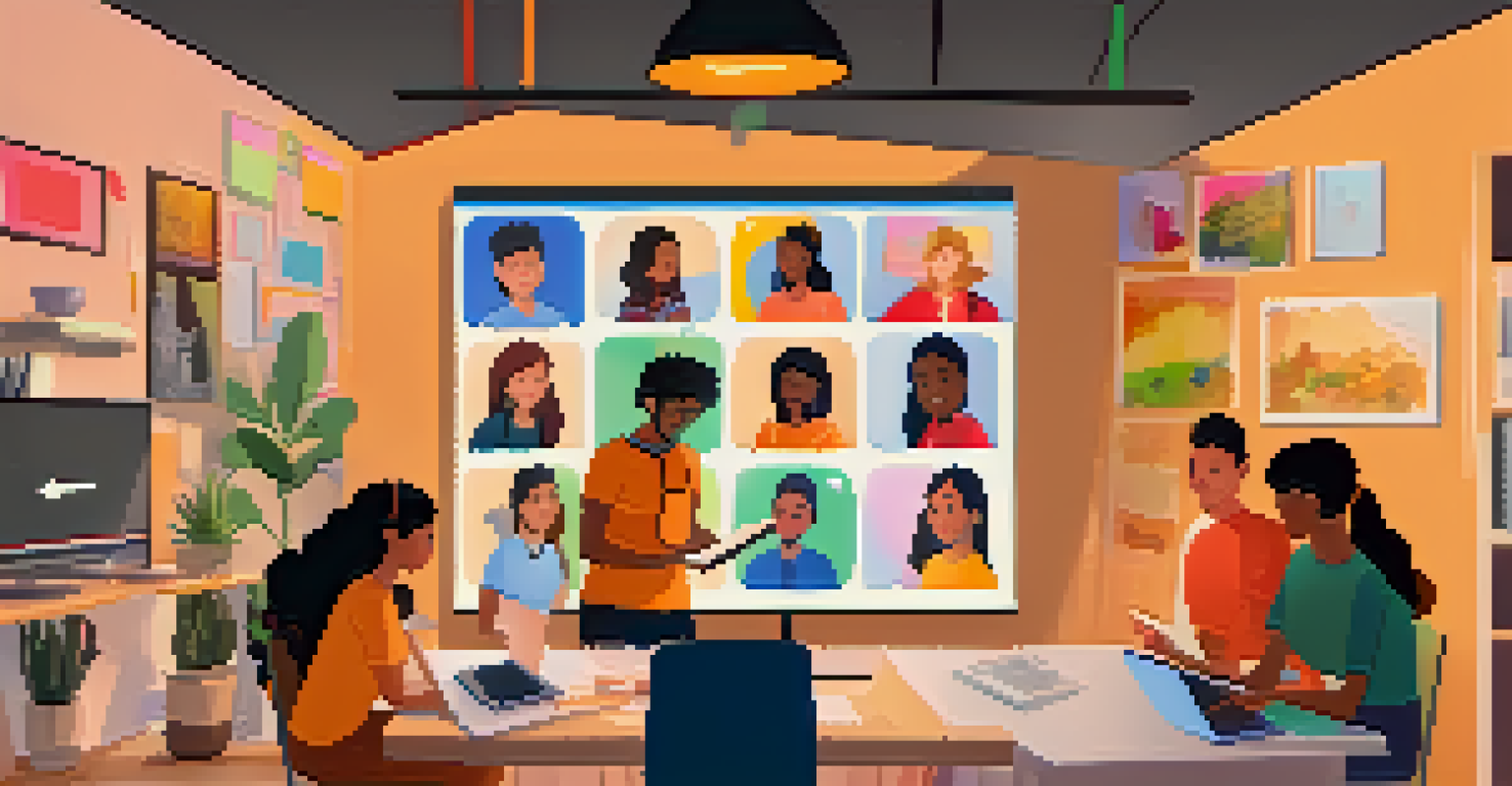The Role of Reflection in Blended Learning Practices

Understanding Blended Learning and Its Importance
Blended learning combines traditional classroom methods with online instruction, creating a flexible learning environment. This approach allows students to learn at their own pace while still benefiting from the guidance of an instructor. The growing popularity of blended learning can be attributed to its ability to cater to different learning styles and needs.
We do not learn from experience... we learn from reflecting on experience.
In a blended learning model, students can engage with content in various formats, such as videos, readings, and discussions. This diversity not only keeps learners engaged but also helps reinforce concepts. By blending in-person and digital experiences, educators can create a more holistic educational journey.
Moreover, blended learning encourages collaboration among students, fostering a sense of community. This interaction can lead to deeper understanding and retention of information, making it an effective approach for today’s diverse learners.
The Significance of Reflection in Learning
Reflection is the process of thinking critically about one’s learning experiences. It involves considering what worked, what didn’t, and how one can improve in the future. This practice is crucial because it helps learners internalize their experiences and make meaningful connections to their knowledge.

When students take the time to reflect, they are more likely to recognize their strengths and areas for growth. This self-awareness can lead to improved learning outcomes and greater motivation. Reflection also encourages students to take ownership of their learning journey.
Blended Learning Enhances Flexibility
Blended learning combines online and in-person methods, allowing students to learn at their own pace while benefiting from instructor support.
In essence, reflection transforms passive learning into an active process. It’s not just about absorbing information but understanding and applying it in various contexts, which is especially important in a blended learning environment.
How Reflection Enhances Blended Learning Practices
In blended learning, reflection acts as a bridge between online and face-to-face components. By encouraging students to reflect on their online experiences, educators can create a more integrated learning experience. This ensures that students see the relevance of both aspects of their education.
Reflection is the lamp of the heart; if it departs, the heart will have no light.
Moreover, reflective practices can help identify gaps in understanding that may arise from the online portion of the course. By addressing these gaps through guided reflection, instructors can provide targeted support. This leads to a more cohesive learning experience overall.
Additionally, reflection aids in the development of critical thinking skills. As students analyze their experiences, they learn to evaluate information and draw conclusions, which are essential skills in both academic and real-world settings.
Strategies for Incorporating Reflection in Blended Learning
To effectively integrate reflection into blended learning, educators can use various strategies. One approach is to provide regular prompts for students to consider their learning experiences. These prompts can be in the form of journals, discussion boards, or even reflective essays.
Another strategy is to incorporate peer feedback into the reflection process. By allowing students to share their insights with one another, they can learn from different perspectives. This collaborative reflection fosters a deeper understanding of the material and encourages community building.
Reflection Fosters Deeper Learning
Engaging in reflection helps students internalize their learning experiences and identify areas for improvement.
Lastly, educators should model reflective practices themselves. By sharing their reflections on teaching experiences, instructors can demonstrate the value of this process. This not only inspires students to reflect but also creates a culture of continuous improvement in the learning environment.
Using Technology to Facilitate Reflection
Technology plays a significant role in enhancing reflective practices in blended learning. Online platforms can provide tools for students to document their reflections in engaging ways, such as blogs or video diaries. This makes the reflection process more interactive and appealing.
Additionally, educational apps can offer prompts and reminders for reflection, encouraging students to make it a regular part of their learning routine. By integrating technology, educators can create a seamless experience that supports continuous reflection.
Furthermore, technology allows for easy sharing of reflections among peers and instructors, promoting a collaborative learning environment. This exchange of ideas can lead to richer discussions and deeper insights into the learning process.
Measuring the Impact of Reflection on Learning Outcomes
Assessing the effectiveness of reflection in blended learning practices is essential for continuous improvement. Educators can employ various measurement techniques, such as surveys and assessments, to gauge student engagement and understanding. This data can provide valuable insights into how reflection influences learning outcomes.
Another method is to analyze the quality of student reflections. By evaluating the depth and thoughtfulness of their responses, educators can determine whether reflection is fostering critical thinking and self-awareness. This qualitative analysis can complement quantitative measures.
Technology Supports Reflective Practices
Integrating technology in blended learning facilitates interactive reflection through tools like blogs and apps, promoting collaboration among students.
Ultimately, understanding the impact of reflection helps educators refine their instructional strategies. It ensures that reflection is not just an add-on but a core component of the blended learning experience.
Challenges and Considerations in Promoting Reflection
While reflection is a powerful tool in blended learning, it comes with its own set of challenges. One common issue is that students may feel overwhelmed by the demands of both online and in-person learning. Finding the time to reflect amidst other responsibilities can be difficult.
Another challenge is encouraging genuine reflection rather than superficial responses. Students may struggle to articulate their thoughts or may not see the value in the process. Educators need to provide clear guidance on how to engage in meaningful reflection.

Lastly, educators must be mindful of the diverse backgrounds and experiences of their students. Tailoring reflection activities to meet the needs of all learners can be a complex task, but it’s essential for fostering an inclusive learning environment.